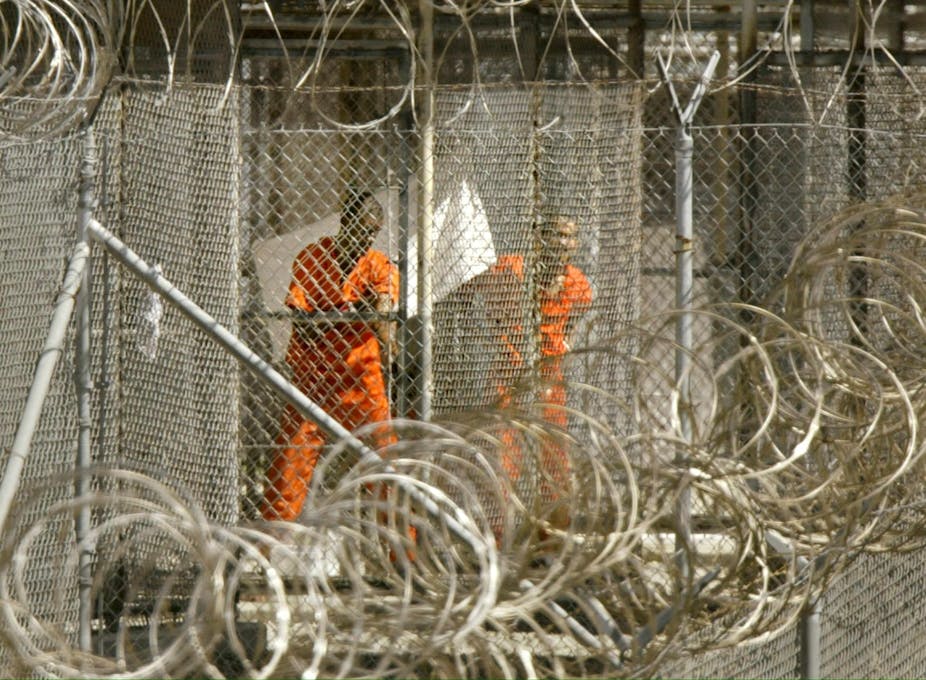The controversy over the CIA torture report has moved on to calls for the UK government to be open about its own involvement. The arguments have also been widened to include other elements of CIA activities, especially in Iraq.
What’s worth remembering in all of this, though, is that the Feinstein report is concerned almost entirely with just over 120 CIA detainees who were mostly detained for their involvement with the al-Qaida movement in Afghanistan. This represents little more than the tip of the iceberg of the many tens of thousands of people detained without trial in Iraq and Afghanistan some of them for years.
Abuse was widespread and not just at Abu Ghraib, with the MoD likely to face criticism from the al-Sweady inquiry later this week, but there are much wider issues than this that stem from the singularly violent “shadow war” that was fought between coalition special forces and some of the most determined of the insurgents in Iraq between 2004 and 2007.
It is relevant to the current controversy for three reasons: it was largely unreported at the time, UK special forces were directly involved and, while initially appearing successful, it has led directly on to Islamic State.
Things fall apart
By the end of 2003, the war in Iraq was going badly wrong even though Saddam Hussein had just been captured. US soldiers – and marines, in particular – were taking serious casualties with hundreds killed and injured, the latter often maimed for life. A frequent response was the use of excessive firepower, but that was leading to numerous civilian casualties which in turn made the coalition seem even more like an occupying force than a liberating army.
At the heart of the insurgency was a particularly brutal element, al-Qaida in Iraq (AQI), which was led by a Jordanian, Abu Musab al-Zarqawi. This offshoot of the main movement proved to be very difficult to counter, which led the US Joint Special Operations Command (JSOC) to set up a singularly well-equipped and determined campaign of special forces operations, under the leadership of General Stanley McChrystal.

Under various names, but most commonly Task Force 145 (TF145), four individual task groups were established to operate with considerable freedom to hunt out and kill or capture suspected insurgents. They had access to the latest intelligence – including frequent use of surveillance drones – and established a pattern of conducting night raids of suspected compounds, killing or detaining suspects, gaining further data from seized documents and interrogation of those captured and using the results to conduct further raids.
Black ops
The four components of TF145 were Task Forces West, Central, North and Black, drawn respectively from the US Navy’s SEAL Team 6, a Delta Squadron, a Ranger battalion and a UK SAS squadron. In one of the very few academic analyses of JSOC operations, Steve Niva describes the process, quoting Mark Urban’s Task Force Black:
By the summer of 2005, JSOC teams undertook an estimated 300 raids per month, hitting targets every night, eventually turning their focus from traditional high-value targets to suspected local players and middle mangers in insurgent networks.
Niva then reports the high point of the process, Operation Arcadia:
During the spring of 2006, using the expanded bandwidth and constant surveillance by unmanned aircraft, JSOC executed a series of raids, known as Operation Arcadia, in which it hunted and killed large numbers of alleged al-Qaeda operatives, ultimately leading to the 7 June killing of Abu Musab al-Zaqarwi by a JSOC airstrike.
The entire JSOC operation was subsequently credited with suppressing much of the Iraq insurgency, but there are two elements that are disturbing, especially in the current context.
One is that the JSOC teams maintained their own detention centres where there are indications of torture and abuse of detainees. Very little is know about this, but the numbers are most likely much higher than the CIA involvement.
One centre was converted from a former Iraqi army base and was known as Camp Nama. It included a key facility, the Black Room, where the euphemistically termed “enhanced interrogation techniques” were practiced.
One of the very few references to the Black Room, a New York Times report from 2006, describes how “prisoners at Camp Nama often disappeared into a detention black hole, barred from access to lawyers or relatives, and confined for weeks without charges”. What went on in the Black Room was also barred to the Red Cross.
Recruiting ground
The extent of the use of torture and the numbers involved during JSOC’s operations in Iraq, including UK involvement, are not in the public domain and probably never will be.
The second element of concern brings us right up to date. Among the tens of thousands of Iraqis detained by the coalition, some for years at a time and including 24,000 in the massive Camp Bucca prison south of Basra, were many who had survived Operation Arcadia and other ISOC operations.
They were either released when the US withdrew or were handed over to the Iraqi government, only to be freed in a series of extraordinary prison breaks in 2012 conducted by what we now call Islamic State. Many of them now form the most important element of jihadist paramilitary leadership within Islamic State, presenting huge problems for the US and its allies as, once more, western intervention in the Middle East escalates.

